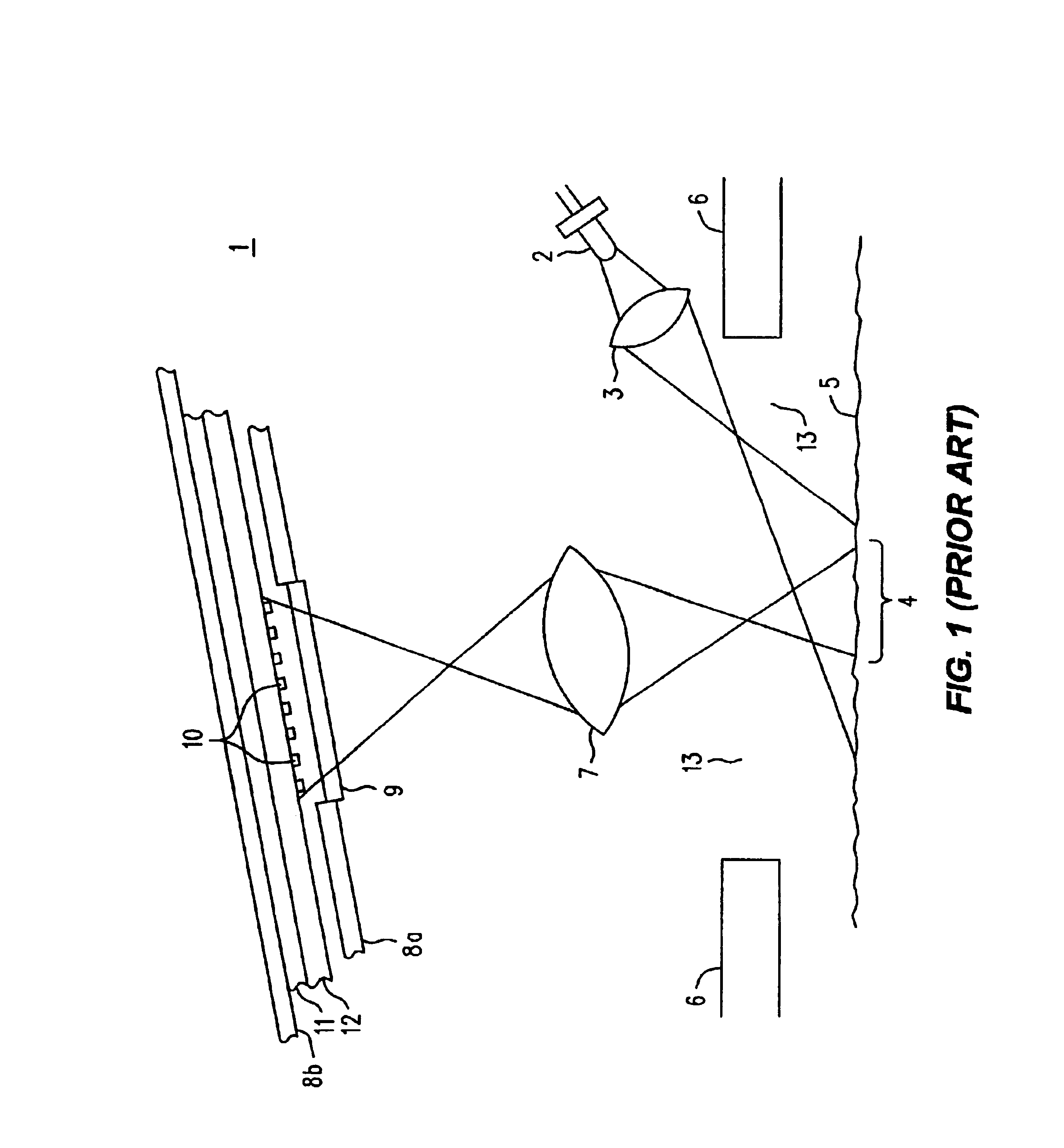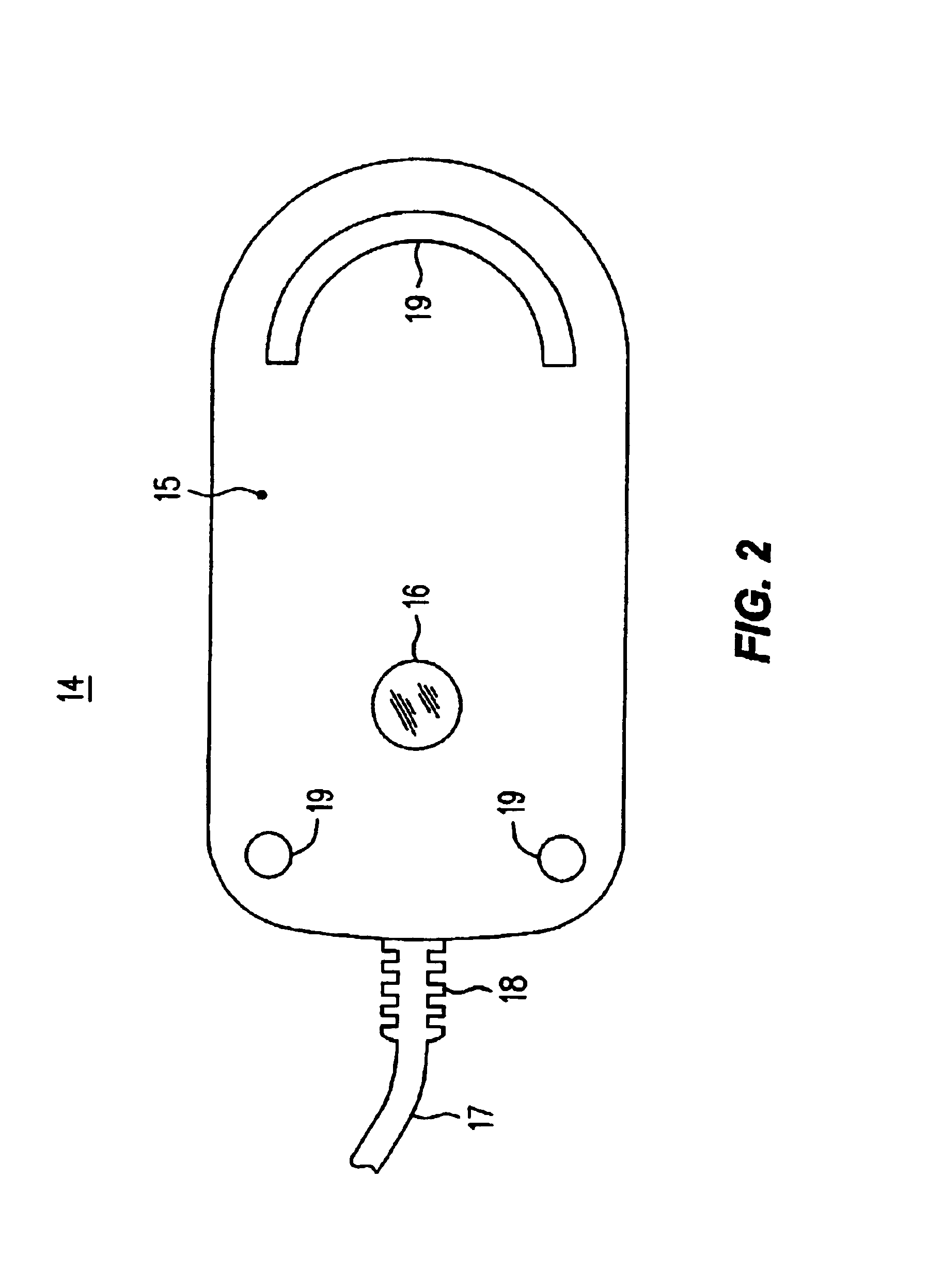Seeing eye mouse for a computer system
a computer system and mouse technology, applied in the field of seeing eye mouse for a computer system, can solve the problems of destroying the advantage of attendant complexity, and achieve the effects of reducing the size of the reference frame, speeding up the tracking process, and degrading the statistical quality of the correlations
- Summary
- Abstract
- Description
- Claims
- Application Information
AI Technical Summary
Benefits of technology
Problems solved by technology
Method used
Image
Examples
Embodiment Construction
[0027]Refer now to FIG. 1, wherein is shown a simplified representation of a cut-away side view of a prior art imaging and navigation arrangement 1 that is generally of the type described by the incorporated Patents. An LED 2, which may be an IR LED, emits light which is projected by lens 3 (which instead of being separate may be an integral part of the LED's package), through orifice 13 in bottom surface 6 and onto a region 4 that is part of a work surface 5. The average angle of incidence is preferably within the range of five to twenty degrees. Although it has been omitted for clarity, the orifice 13 might include a window that is transparent for the light from LED 2, and which would serve to keep dust, dirt or other contamination out of the innards of the seeing eye mouse. Work surface 5 might belong to a special object, such as a mouse pad, or more generally, it will not, and might be the surface of nearly anything except smooth glass. Examples of suitable materials include, bu...
PUM
 Login to View More
Login to View More Abstract
Description
Claims
Application Information
 Login to View More
Login to View More - R&D
- Intellectual Property
- Life Sciences
- Materials
- Tech Scout
- Unparalleled Data Quality
- Higher Quality Content
- 60% Fewer Hallucinations
Browse by: Latest US Patents, China's latest patents, Technical Efficacy Thesaurus, Application Domain, Technology Topic, Popular Technical Reports.
© 2025 PatSnap. All rights reserved.Legal|Privacy policy|Modern Slavery Act Transparency Statement|Sitemap|About US| Contact US: help@patsnap.com



